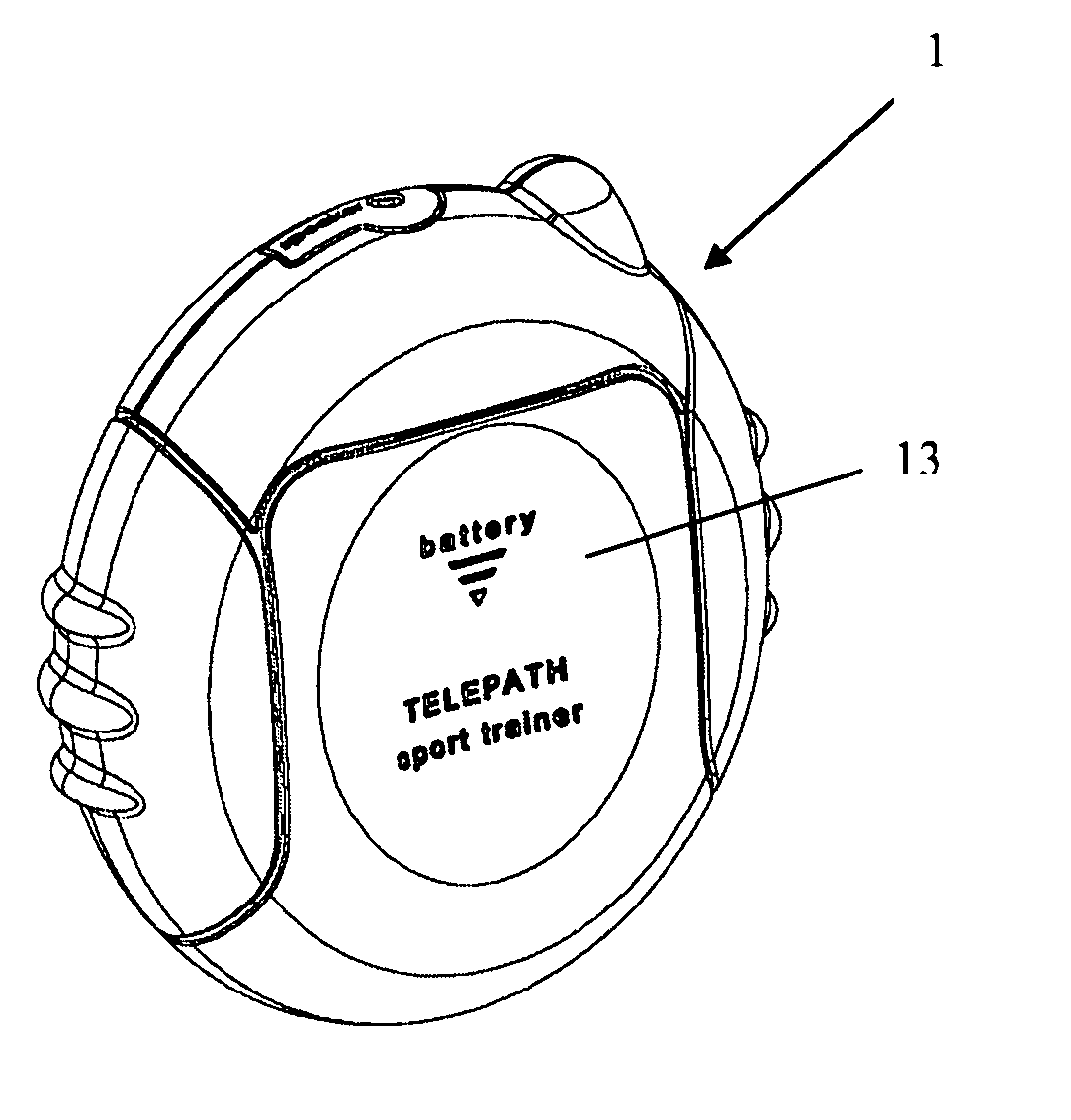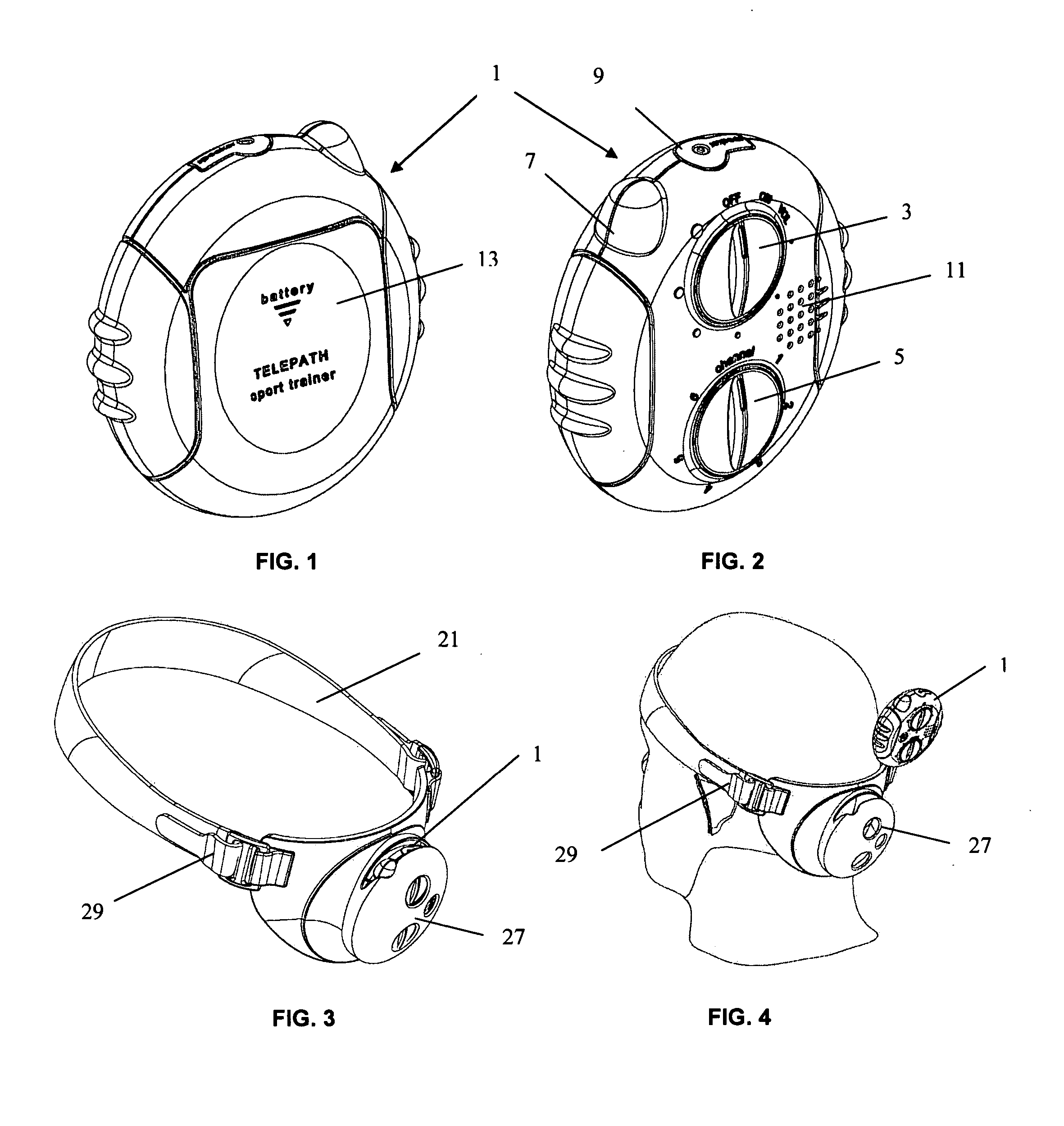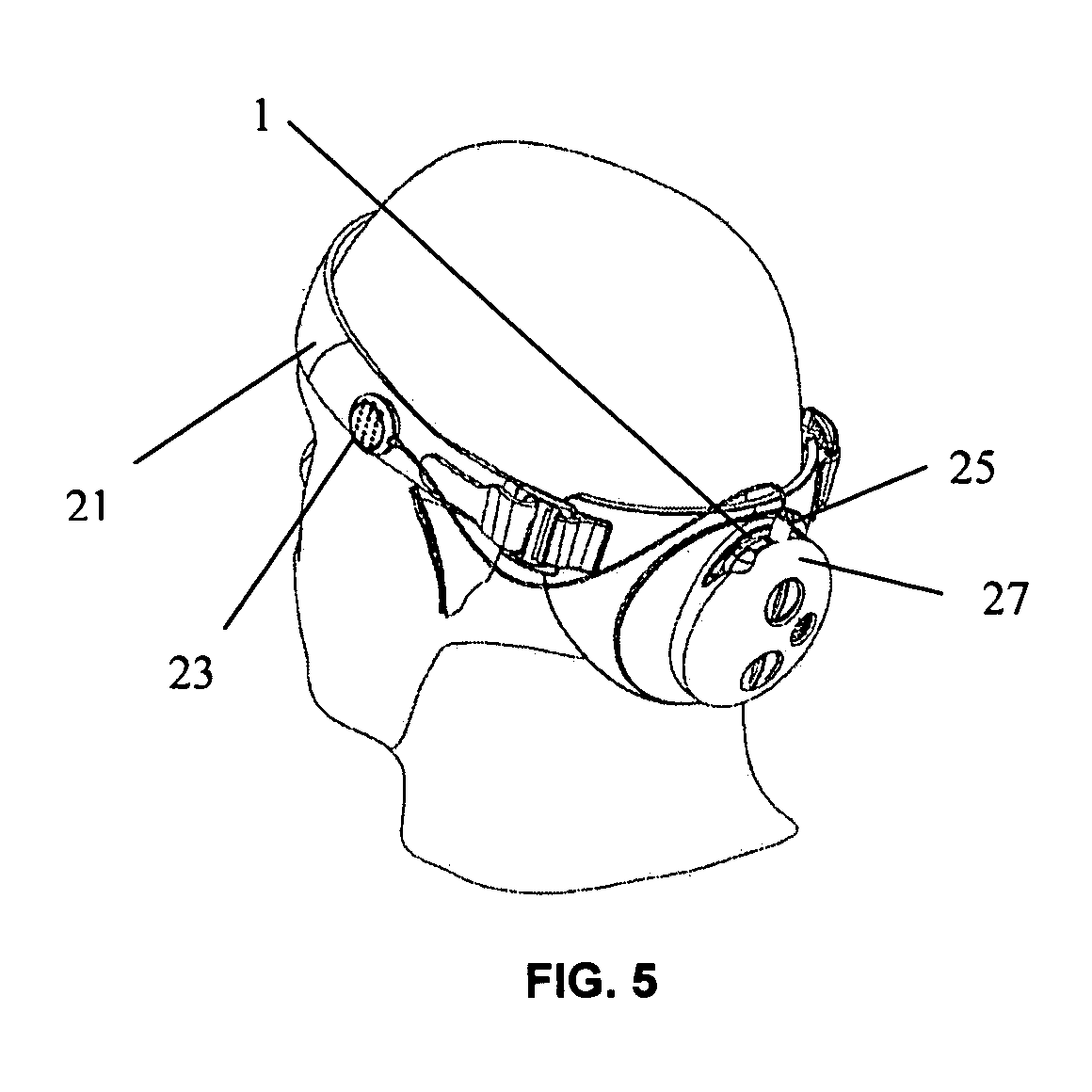[0005] This invention satisfies the above needs. The apparatus of the present invention would provide a
wireless communication system that would broadcast a coach'
s voice to his / her players. As a result, the coach would not have to raise his / her voice or yell to communicate to the players. Instead, all of the players would easily hear the coach's instructions simultaneously despite any
physical separation across a field of play or being in the presence of distracting ambient
noise such as crowd
noise or traffic. As a result, use of the system of the present invention makes it easier for a coach to
relay instructions, strategies and philosophies to the players. The coach could also teach his / her players so that they learn their assignments and improve their technique. This would make practice sessions more productive so that the player's
learning curve is greatly improved, opening the door to better results as a team and as an individual.
[0006] The present invention would be suitable for a wide range of sports. For example, soccer, football, baseball, softball, lacrosse,
ice hockey, and field hockey are all sports wherein the players can be physically separated at a great distance from the coach, thus making communication between a coach and the players difficult. By using the system of the present invention, a coach could now communicate without yelling. Players would benefit from being able to hear the coach's instruction clearly and simultaneously. The players would enjoy improving individually and as a team. As the players and the team improved, they may win more games and experience the thrill of winning, thus making the sport more enjoyable.
[0010] In addition, the
transmitter of the present invention may be voice-activated (VOX). Alternatively, the
transmitter of the present invention may have a separate activation device, such as a button that is depressed for a push-to-talk (PTT) mode. Additionally, the transmitter may have an
amplifier that boosts the
signal sent to the receivers of the players. The transmitter may have a frequency selector or
tuner that permits the setting of a broadcast frequency to match the receivers of the players, thereby allowing competing teams to use different frequencies that allow uninterrupted communication for each team on the same field of play. In addition, the transmitter of the present invention may use a typical scrambling technology as is know in the art to permit secure communications between the coach and his players. The transmitter may use a battery or a
battery pack.
[0012] An example
receiver of the present invention is preferably compatible with any of the various embodiments of the transmitter as described above. For example, the
receiver may be comprised of a
tuner to match the
signal sent by the transmitter or a
repeater. A preferred embodiment of the receiver is easily carried on a suspension, headband, loop, or sweatband that lessens its
impact on the player-wearer and will be compatible with the activity of a player-wearer, especially with respect to sporting activities that require a great deal of mobility. Preferably, an embodiment of the receiver may be comfortably worn with a standard cap, helmet, uniform, or protective device worn by a player. Additionally, the receiver may be integrated into a cap, helmet, uniform, piece of apparel, or a protective device worn by a player. Any of the carriers for the receiver listed above may be additionally comprised of adjustable straps for a secure fit. A preferred embodiment of a receiver of the system of the present invention takes
advantage of known
miniaturization technology using integrated circuits to provide a receiver for a player that is lightweight and compact. Preferably, the receiver would have low energy requirements such that an associated battery or
battery pack may be minimally sized.
[0013] A receiver of the system of the present invention may also be comprised of a receiving antenna. Preferably, a receiving antenna would be integrated into or self-contained in the receiver itself. Preferably, the receiving antenna would allow the comfortable fit of a cap, helmet, uniform, or protective device that is worn with the receiver.
[0015] The speaker of the present invention may take the form of any type of speaker typically known in the art. The speaker may be of any form such as the ear pieces associated with portable electronic stereos, radios, CD players, and computerized music file players. The speaker may be a relatively flat apparatus additionally comprising a form fitting cover such as a foam or malleable plastic. Alternatively, the speaker may be formed like an ear
bud or a more form-fitting earplug. Alternatively, the speaker may utilize
miniaturization technology such as is associated with hearing aids to provide a speaker and receiver that is extremely small and has low energy requirements. Depending upon a particular application of the system, the choice of a speaker may be influenced on the desired interface with a player's ear so that the ambient
noise heard by a player is reduced or eliminated. In addition, a player may be provided with a pair of speakers rather than a single speaker. Preferably, the speaker used in an example embodiment of the system of the present invention is compact so that it can be worn with or integrated into a suspension, headband, loop, or sweatband. Preferably, a speaker may be comfortably worn with a standard cap, helmet, uniform, or protective device worn by a player. Alternatively, a speaker may be integrated into a cap, helmet, uniform, piece of apparel, or a protective device worn by a player.
 Login to View More
Login to View More  Login to View More
Login to View More 


